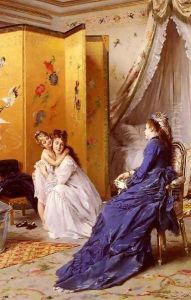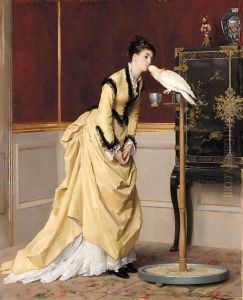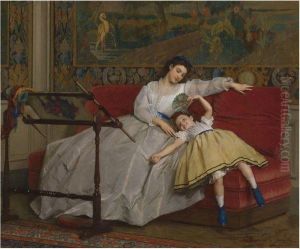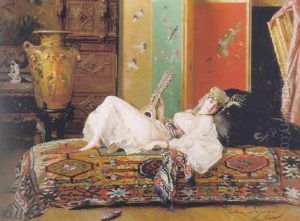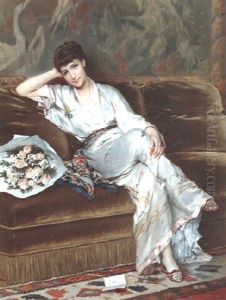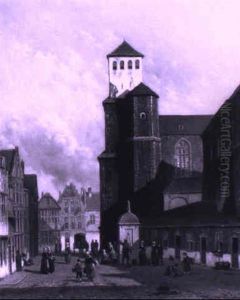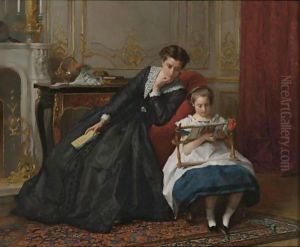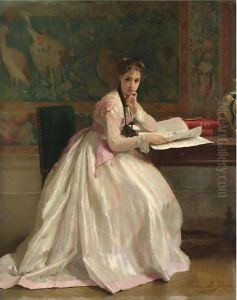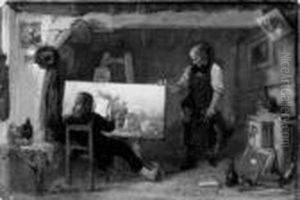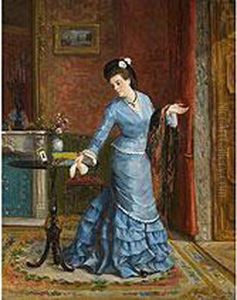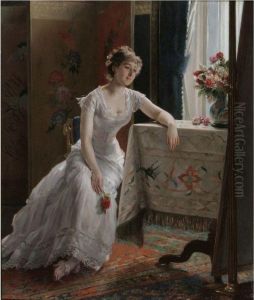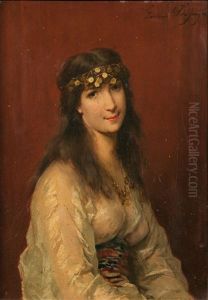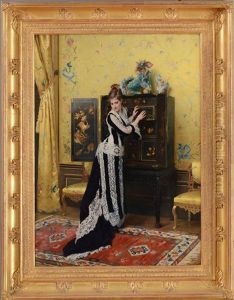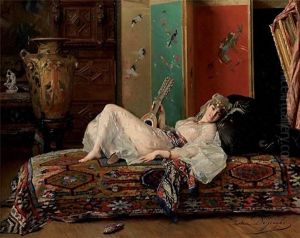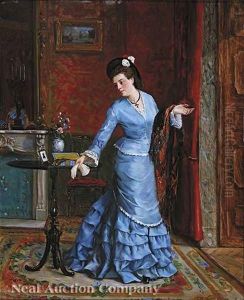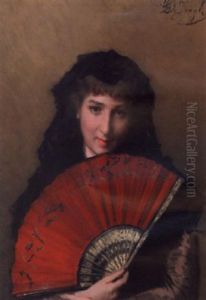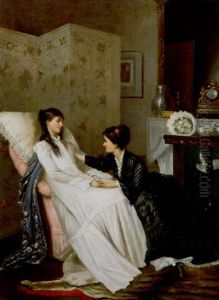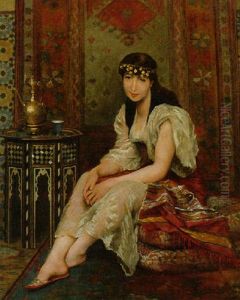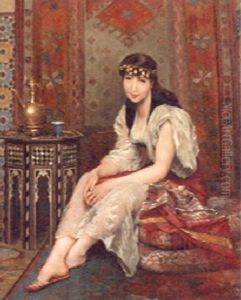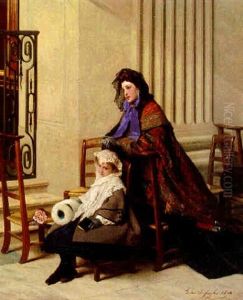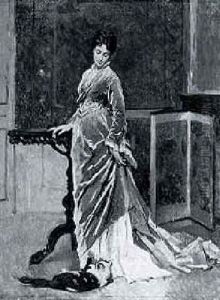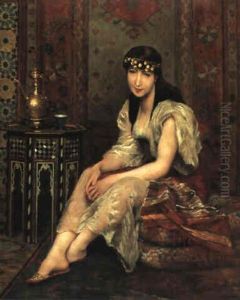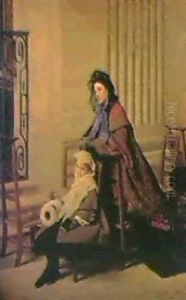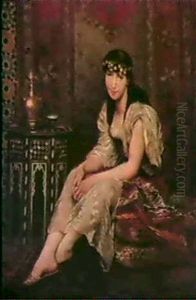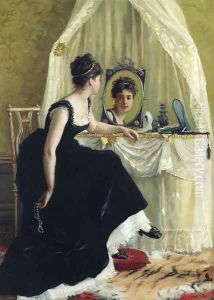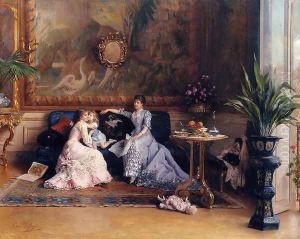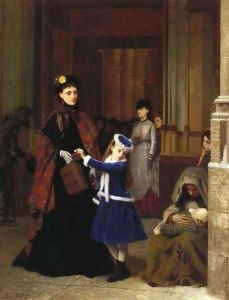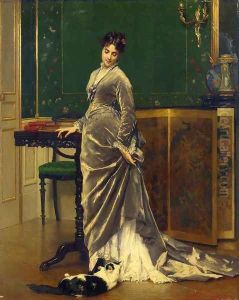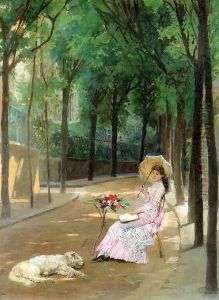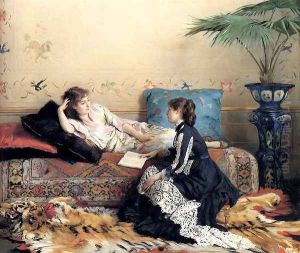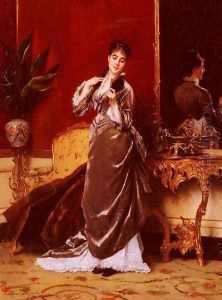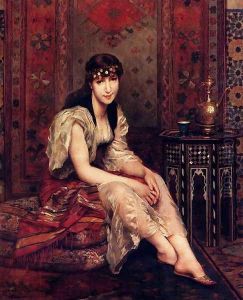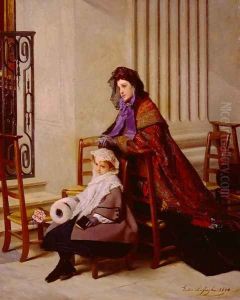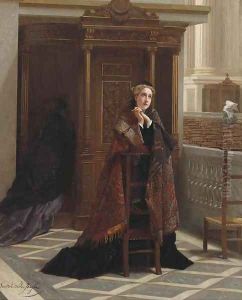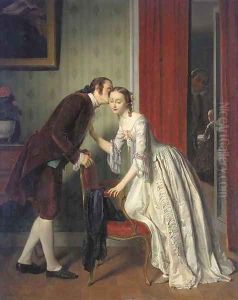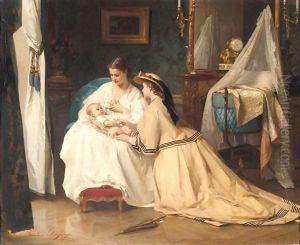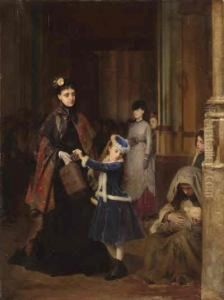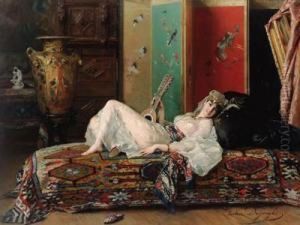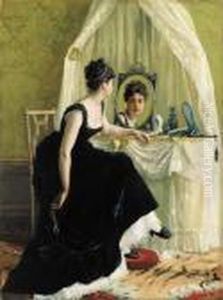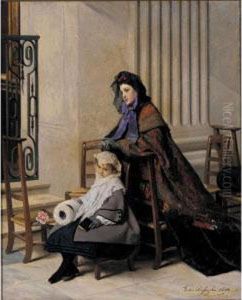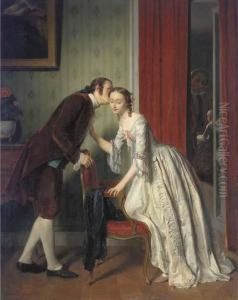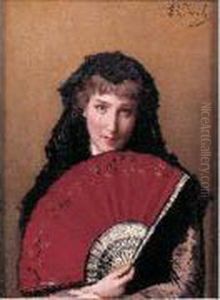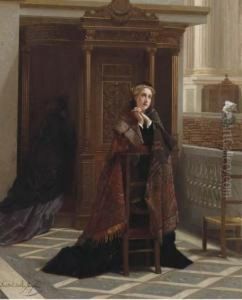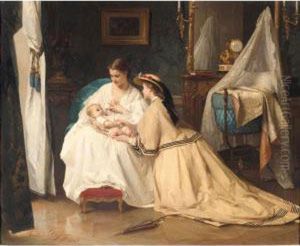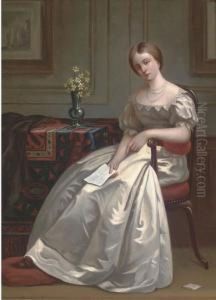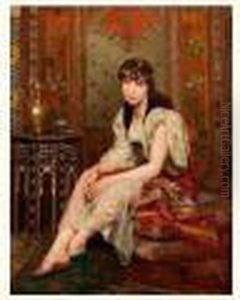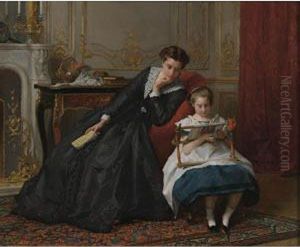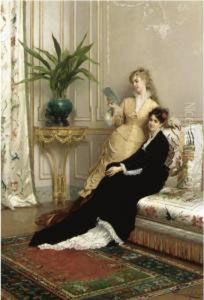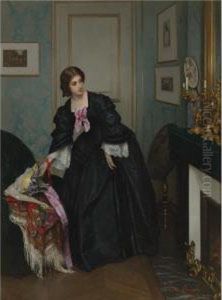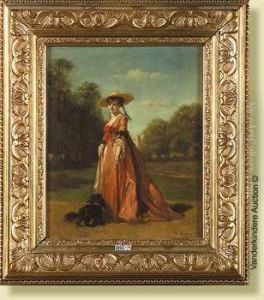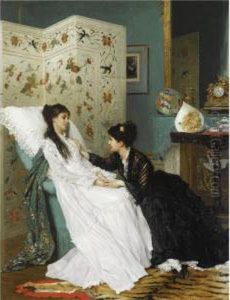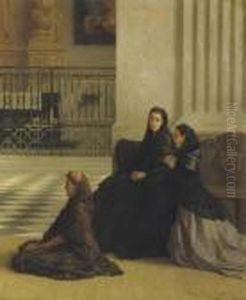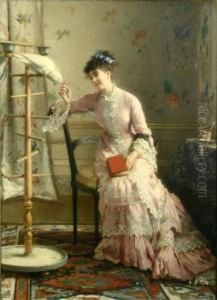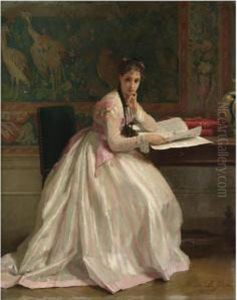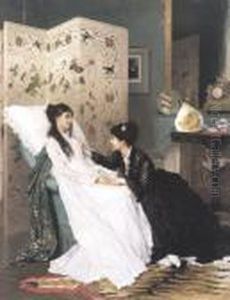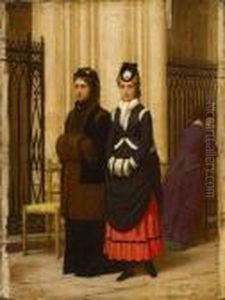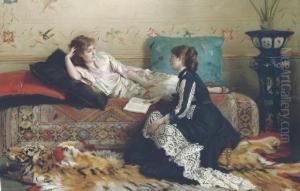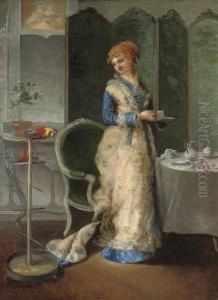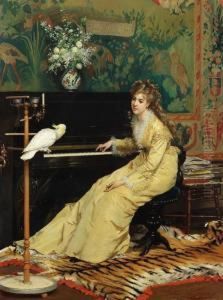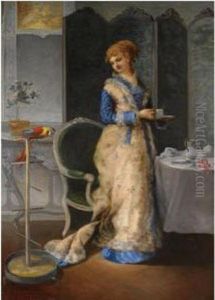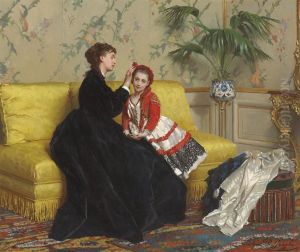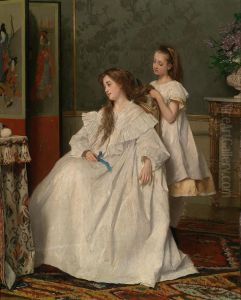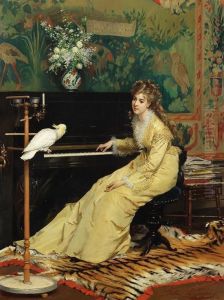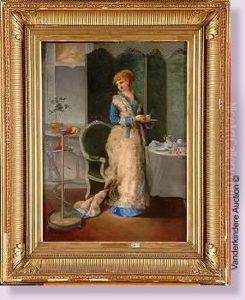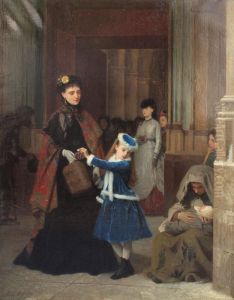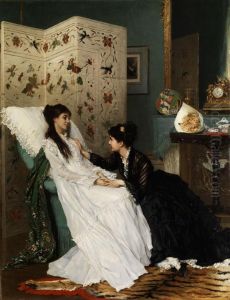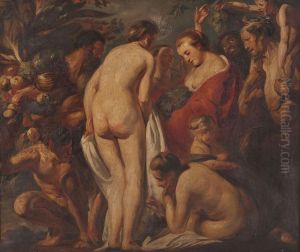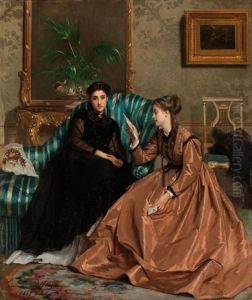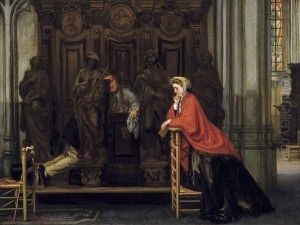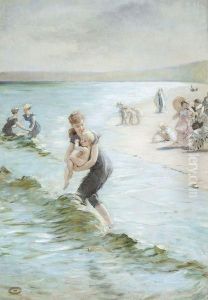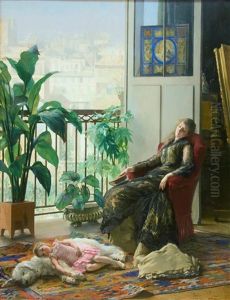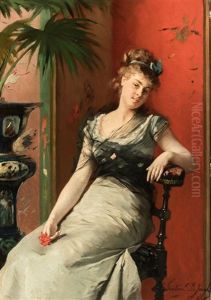Gustave Leonhard de Jonghe Paintings
Gustave Leonhard de Jonghe was a Belgian artist known for his genre paintings and portraits that reflected the luxurious and leisurely lifestyle of the bourgeoisie in the 19th century. Born on February 4, 1829, in Kortrijk, Belgium, de Jonghe was the son of the painter Jan Baptiste de Jonghe. Under his father's influence, Gustave developed an early interest in art and honed his skills, which would later contribute to his success as a painter.
De Jonghe received his initial artistic training at the Academy of Fine Arts in Kortrijk before moving on to study at the Royal Academy of Fine Arts in Antwerp. It was there that he was influenced by the Flemish painting tradition and the works of artists such as Anthony van Dyck and Peter Paul Rubens. His early works were primarily historical and religious in theme, but as his career progressed, de Jonghe became known for his genre scenes that often depicted elegant interiors and the lives of the affluent.
In 1855, Gustave de Jonghe moved to Paris, which was then the center of the art world. Paris provided him with ample opportunities to exhibit his work and to immerse himself in the vibrant artistic community. He exhibited his paintings at the Paris Salon, where he received positive acclaim, and his works became sought after by art collectors and patrons. He also exhibited internationally, including at exhibitions in London.
De Jonghe's paintings are characterized by their fine detail, rich color palette, and the luxurious textures of fabrics and materials. He often portrayed women in domestic settings, showcasing their beauty and grace in moments of contemplation or leisure. His ability to capture the nuances of light and shadow added a lifelike quality to his work, making his paintings highly realistic.
Throughout his career, Gustave de Jonghe remained committed to genre painting, and his works often reflected the romanticized visions of the upper class. Despite the changing artistic trends of his time, such as the rise of Impressionism, de Jonghe stayed true to his classical style, which continued to be popular among his patrons.
Gustave Leonhard de Jonghe passed away on January 24, 1893, in Paris. Today, his works can be found in museums and private collections around the world, testament to his lasting impact on the genre of 19th-century European art.
